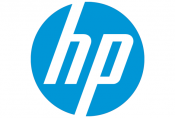Updated: HP Accused of Installing Spyware Client Without Consent
Posted by: Timothy Tibbetts on 12/18/2017 08:22 AM
[
 Comments
]
Comments
]
Update: Synaptics has responded saying this "feature" is in all of their drivers being used by PC OEMs in production versions.
"Each notebook OEM implements custom TouchPad features to deliver differentiation. We have been working with these OEMs to improve the quality of these drivers. To support these requirements and to improve the quality of the experience, Synaptics provides a custom debug tool in the driver to assist in the diagnostic, debug and tuning of the TouchPad. This debug feature is a standard tool in all Synaptics drivers across PC OEMs and is currently present in production versions. This debug tool was turned off after production and prior to shipment. Synaptics believes now, for best industry practices, that it should remove this debug tool for production versions of the driver. Synaptics is unaware of any breach of security related to this debug tool."
 Hewlett Packard is being accused of installing spyware called Touchpoint Analytics Client. There is no warning, no asking for permission and it is considered telemetry, meaning it can send data back and forth.
Hewlett Packard is being accused of installing spyware called Touchpoint Analytics Client. There is no warning, no asking for permission and it is considered telemetry, meaning it can send data back and forth.
HP Touchpoint Manager is described as a way of offloading "time-consuming tasks of device support and lifecycle management."
This one is so sneaky that no one knows who, or how, it was delivered. Because of this, it's come into question whether it was Hewlett Packard or Microsoft via Windows updates. A search of forums found repeated topics with no response from either company that we could see.
It's surprising that not only do users not know how it got on their computers but what data is being sent. Some users are reporting slow computers as a result.
We do know that it installs without asking for permission and then "harvests telemetry information that is used by HP Touchpoint's analytical services." The Analytics Client forms part of HP Touchpoint Manager and, according to ghacks.net, sends data to HP once every day.
For now, you can check your Services or Programs under the Control Panel to see if it's installed. Uninstalling it will do the trick but we suggest you use an uninstaller like IObit Uninstaller to be sure all files, folders, and registry entries are removed.
"Each notebook OEM implements custom TouchPad features to deliver differentiation. We have been working with these OEMs to improve the quality of these drivers. To support these requirements and to improve the quality of the experience, Synaptics provides a custom debug tool in the driver to assist in the diagnostic, debug and tuning of the TouchPad. This debug feature is a standard tool in all Synaptics drivers across PC OEMs and is currently present in production versions. This debug tool was turned off after production and prior to shipment. Synaptics believes now, for best industry practices, that it should remove this debug tool for production versions of the driver. Synaptics is unaware of any breach of security related to this debug tool."
 Hewlett Packard is being accused of installing spyware called Touchpoint Analytics Client. There is no warning, no asking for permission and it is considered telemetry, meaning it can send data back and forth.
Hewlett Packard is being accused of installing spyware called Touchpoint Analytics Client. There is no warning, no asking for permission and it is considered telemetry, meaning it can send data back and forth.HP Touchpoint Manager is described as a way of offloading "time-consuming tasks of device support and lifecycle management."
This one is so sneaky that no one knows who, or how, it was delivered. Because of this, it's come into question whether it was Hewlett Packard or Microsoft via Windows updates. A search of forums found repeated topics with no response from either company that we could see.
It's surprising that not only do users not know how it got on their computers but what data is being sent. Some users are reporting slow computers as a result.
We do know that it installs without asking for permission and then "harvests telemetry information that is used by HP Touchpoint's analytical services." The Analytics Client forms part of HP Touchpoint Manager and, according to ghacks.net, sends data to HP once every day.
For now, you can check your Services or Programs under the Control Panel to see if it's installed. Uninstalling it will do the trick but we suggest you use an uninstaller like IObit Uninstaller to be sure all files, folders, and registry entries are removed.
Comments






